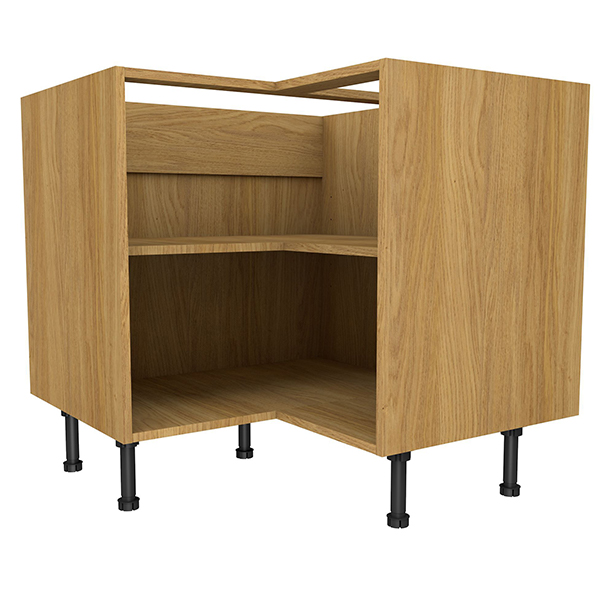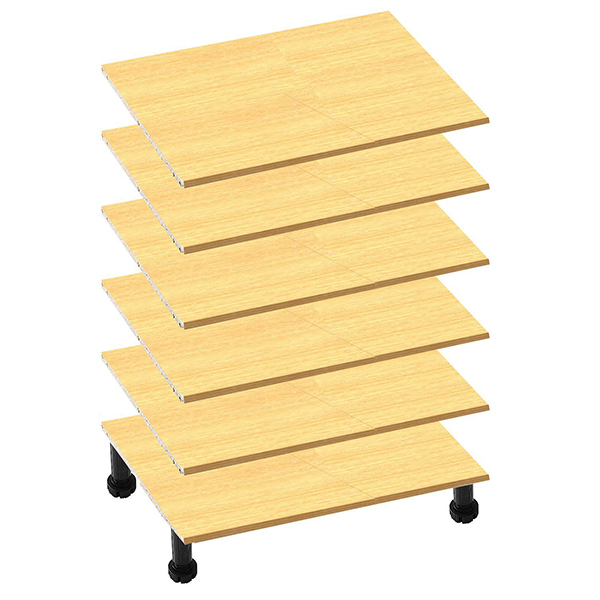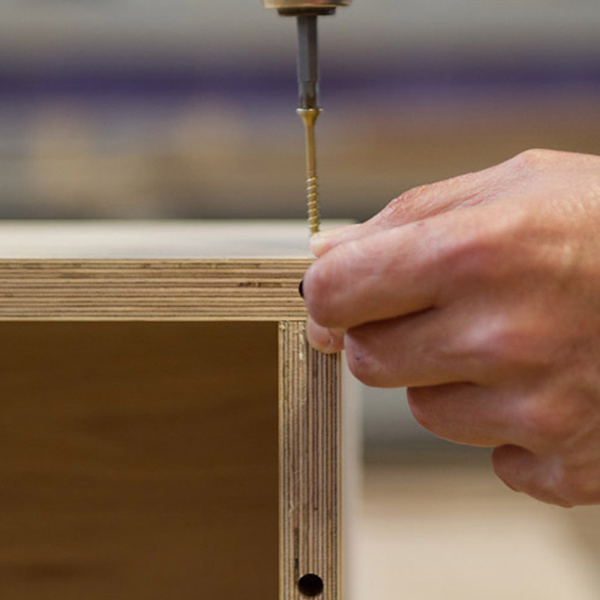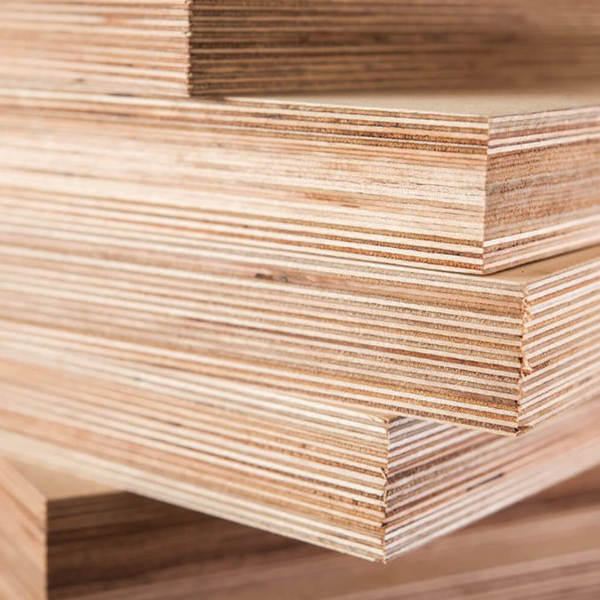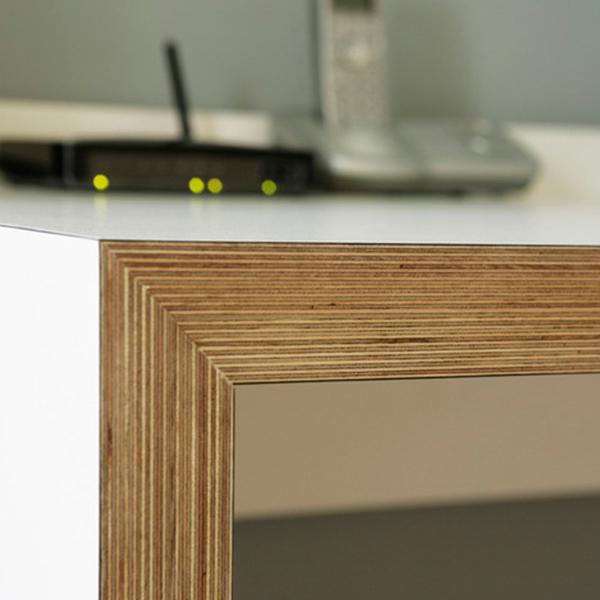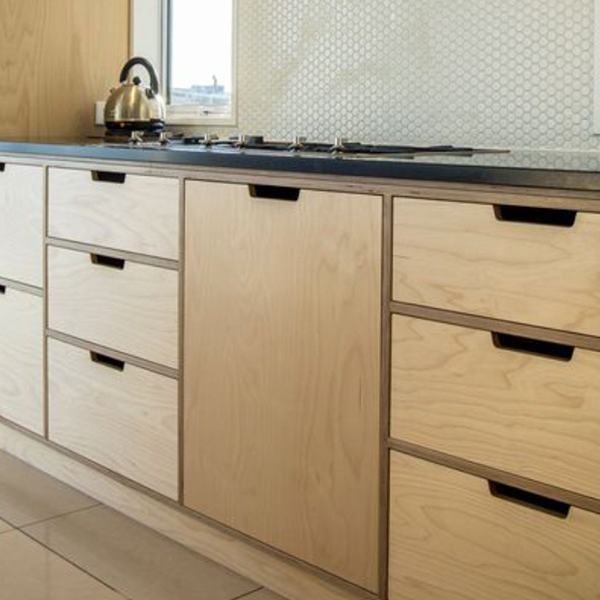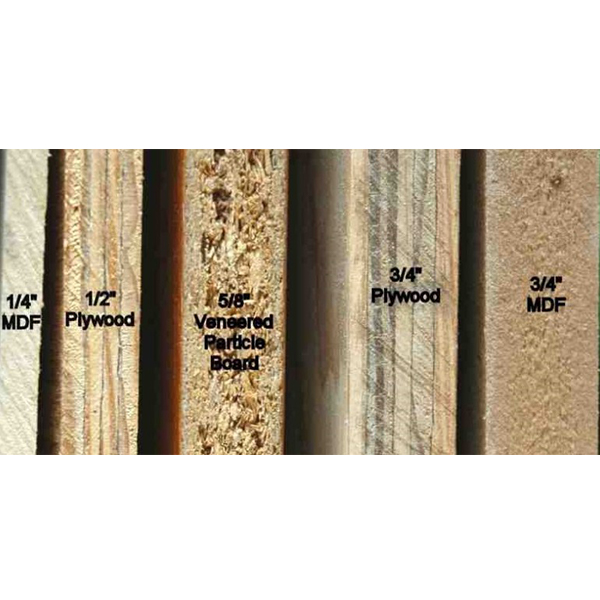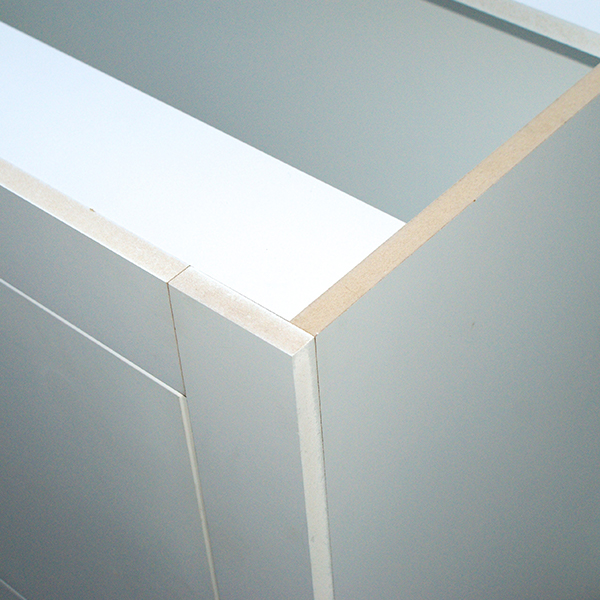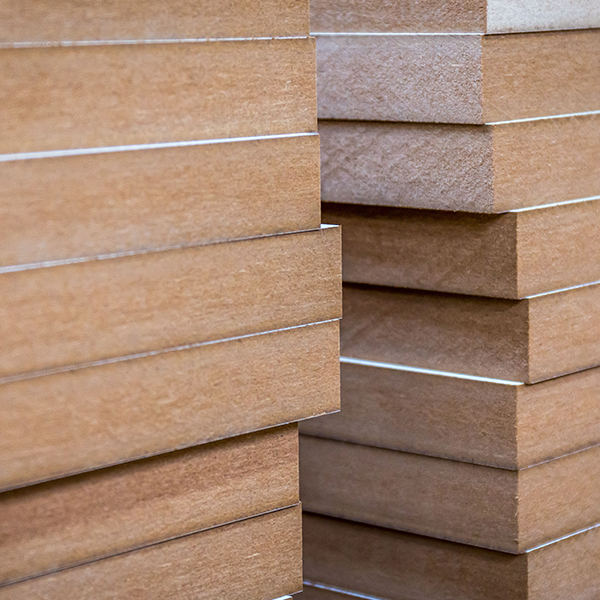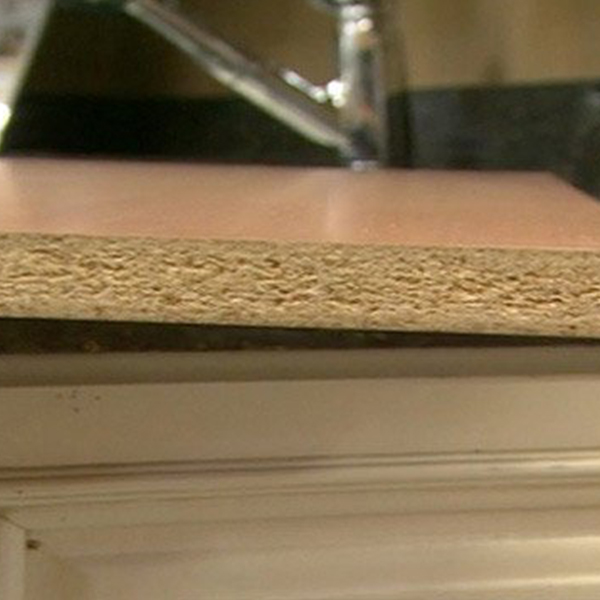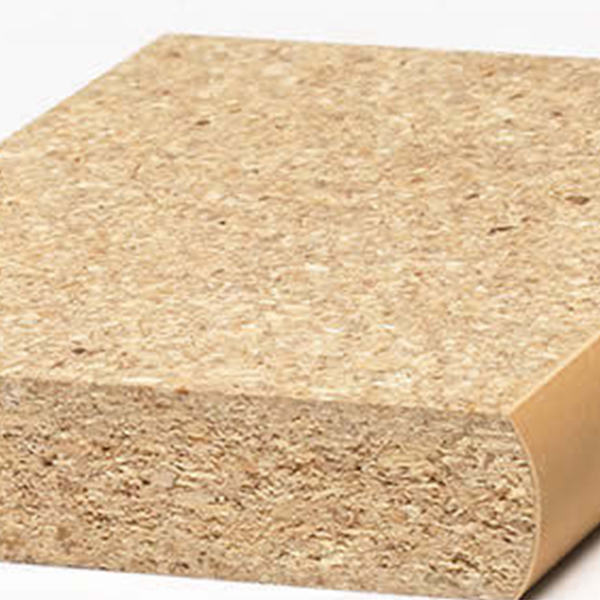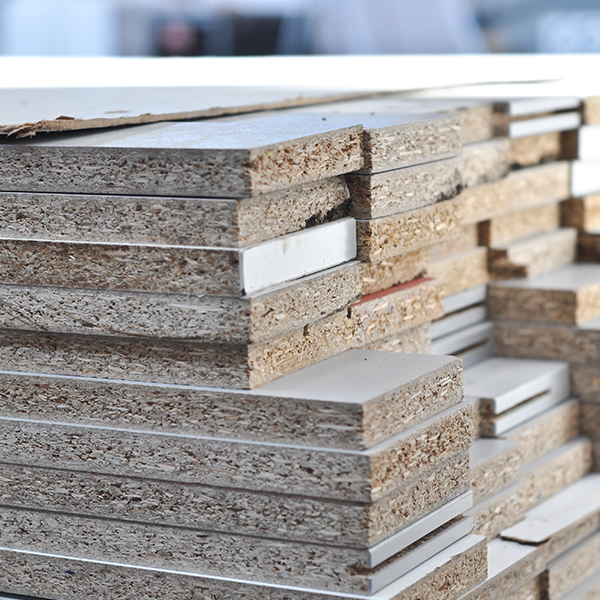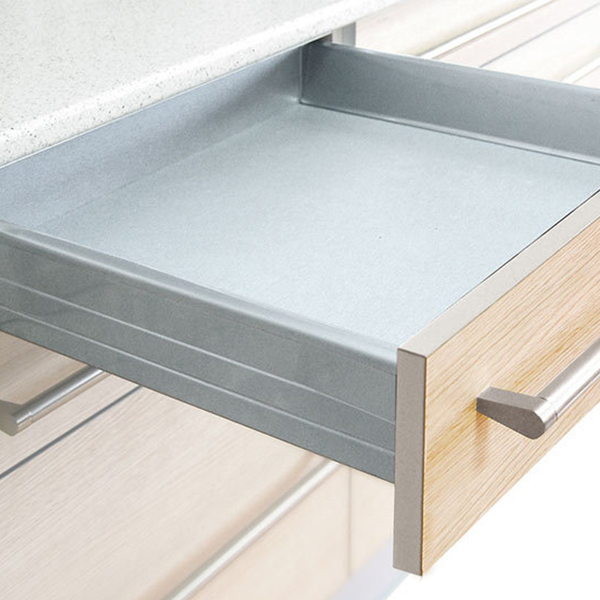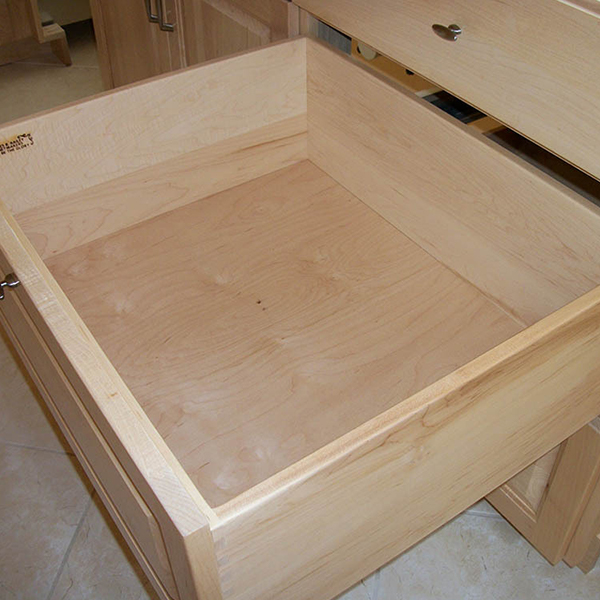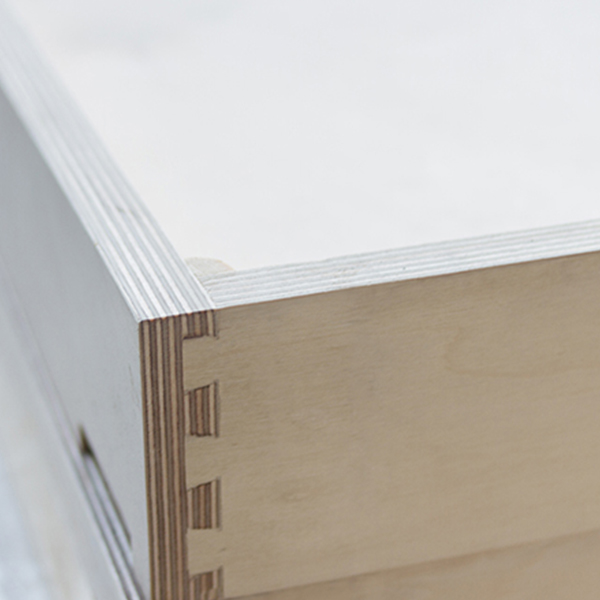Cabinets
One of the things you need to consider when buying a kitchen is whether you want a flat pack kitchen or a rigid, otherwise known as constructed kitchen. Flat pack kitchens are delivered as components, just like an IKEA wardrobe, that needs to be assembled on site, whereas rigid kitchens are delivered fully assembled. Flat pack kitchens use the cam and dowel method of assembly, where the unit is held together with a combination of wooden dowels & metal cams. Rigid kitchens are assembled in the factory using the glue and dowel method of assembly. All of the components are placed inside a jig which gently squeezes them together & holds them in place for several minutes to allow the glue to dry.
There are advantages and disadvantages to both types of cabinet and more information can be found in our Buying Guide.
Cabinet Construction
There are three basic structural components to the kitchen cabinet: the box, the shelves on the inside and the drawers and each can be constructed in a number of ways. In the UK cabinets are available in three forms: already constructed at the factory and ready to install, flat packed and ready to assemble and partly assembled. The cabinets look as you would expect, basically a rectangular box ready to be filled up with shelving and drawers and are typically constructed of three different materials plywood, particleboard or MDF (medium-density fibreboard).
Manufacturers of the mass-market kitchen cabinets tend to have better/best or good/better/best options for their cabinet boxes, which may consist of one or even a combination of all these three materials. We cover each of the materials in more detail below.
Plywood
When plywood is used for kitchen cabinets, it’s typically ¾ inch thick and has a maple or birch veneer. Plywood is made from layers of wood laminated together and has the benefit of being a fairly stable material that performs well over time and in areas with higher humidity and the chance of contact with water. The panels can be glued, nailed or screwed together, and are usually installed (as is the case with most cabinets) by screwing them into the wall. Plywood’s main downside is that it is relatively expensive.
Medium Density Fibreboard
And let's be honest MDF is real wood, it's just not the kind of wood that most people like. MDF is less expensive than plywood and has a more uniform surface than particleboard. MDF is often used for kitchen doors that are to be painted, rather than using thinly milled solid wood, because it’s such an easily paintable material.
Particleboard
The advantage of Particleboard is quite simply the low price. It's cost effective because it's made from bits of wood (the particles) pressed very tightly together with glue. Particleboard can be covered with a veneer of wood or melamine, or a paper veneer printed to look like wood. The interior can be white or a wood shade.
The disadvantage of particleboard is that it can react to moisture and is more prone to coming apart at certain stress points, for example where screws hold in the hinges. It's important to ask your kitchen consultant about how the veneer will hold up to small amounts of water (glasses not completely dried, for instance) or something more serious, like a spill that sits for a while. Particleboard is available in a range of different qualities and some manufacturers regularly test their particleboard cabinets for performance, so also ask if there are different grades of material from which to select, and what you can expect in terms of durability.
Drawers and Shelves
Drawers and shelves are often made from the three materials particleboard, MDF or plywood, and can be assembled in a number of ways. The most common and least expensive method of drawer construction is gluing and pinning (stapling) the ends together. The sides of the drawers are usually made from ½ inch of material with a bottom panel that’s ¼ inch thick. This is another place construction can vary, with thinner or thicker materials all the way around. At the premium end of the market the drawers may be constructed with dovetail, where small pieces on the ends are routed out to key into one another, making a connection that is very difficult to dislodge.
The Compare Network
Copyright – Insight Retail Group Ltd 2025 All rights reserved
